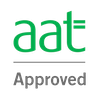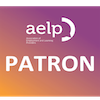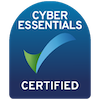CPD Safeguarding in Education (Social Series)
Course Overview
Gain an understanding of safeguarding in Education with this auto-assessed short course. The course has been designed to provide the knowledge and skills to protect the welfare of children and vulnerable adults in education settings such as schools and colleges. Learn about why safeguarding policies and procedures are vital to child protection and the statutory guidance available to help with this.
Develop the knowledge of what safeguarding is, why it’s important and the roles and responsibilities involved in safeguarding children in education. This course also covers the importance of British values and prevent duties as part of safeguarding as well as what consent is and how to stay safe online.
Key Information
Course Length
2 hours
Course Level
Level CPD
Learning Method(s)
Online materials
Online assessment
For Individuals
Benefits
- Automatic enrolment with an immediate start
- Fully online course
- Study from anywhere, at any time
- Perfect for an introduction or refresher in a subject
- A great addition to a CV
- Receive a digital e-certificate upon completion
- Nationally recognised
- Access to an award-winning e-learning platform
- Official CPD certified course
- No hidden costs
Cost and Funding Information
Course Price
£30.00
Study this course
Buy the course today and begin your journey to qualification
Section 1: What is safeguarding?
- Definition of safeguarding, including an overview of the background and legal basis for safeguarding provision (to include reference to relevant legislation)
- Explanation of why this is important to staff in education (safeguarding is everybody’s business) and development of an awareness of children’s rights (UNCRC) and appreciating the difference between safeguarding and child protection
- Definitions of physical abuse, emotional abuse, sexual abuse, and neglect (to include a case study around each of these, followed by questions to check understanding/learning) and an overview of the toxic trio
- Overview of key safeguarding concerns, including Peer-on-peer abuse, Child sexual exploitation, Sexual harassment and violence, FGM, Criminal exploitation, County Lines, Gangs and serious youth violence
- How to recognise signs of abuse
- The effects of abuse on children and vulnerable adults
- How and how not to respond to concern that an individual is at risk of harm
- What to do if you have a concern - what information to record and how/where to report this, including how to respond to a disclosure or allegation of abuse or neglect
- Signposting to further learning/resources
Section 2: Prevent/British Values
- What are British Values? Definition of each of these and overview of the importance (to include legislation supporting British Values – Equality and Inclusion, Human rights, and Counter terrorism)
- How British Values can be promoted through behaviours and attitudes within education
- Definition of the prevent duty including background and legal context
- Explanation of why it is important
- How the Prevent Duty supports British Values
- Definitions of Radicalisation, Terrorism and Extremism
- Factors that can make individuals susceptible to radicalization, and warning signs that an individual may be becoming radicalised (to include a case study and questions to check understanding/learning)
- How individuals can be kept safe from radicalisation referring to both internal and external factors
- The legal requirements made for organisational bodies regarding individuals who may be radicalised
- Actions, including reporting procedures, that should be taken if there are concerns that a vulnerable individual or group may be at risk from radicalisation
- Signposting to further learning/resources
Section 3: Consent
- Legal definition of what consent is, defined by Section 74 of the Sexual Offences Act 2003, including a brief overview of capacity and freedom to consent
- Examples of what verbal and non-verbal consent looks like and how consent is not just someone saying “yes” or “no”
- Why gaining consent is important, the legal obligation behind it and how it is about mutual respect and safety of all parties
- Consequences of not gaining consent, particularly around new phenomenon – such as photo sharing, filming, upskirting, sharing data etc
- Statutory duty of staff in education around consent and sexual harassment
- How to support those who have experienced assault, harassment, or rape - signposting to advice and help with emphasis on this being free and confidential. There will be information on how to report and what to do to preserve evidence of the crime
- Advice on how to react and talk to someone who is confiding in them about their experience.
- Signposting to further learning/resources
Section 4: Online safety
- General overview of the online world – uses, benefits and then cover the risks including – online radicalisation and extremism, sharing personal content and sexting, sexual offending against children online (including grooming, pornography), mental health impacts, privacy/identify theft, and cyberbullying
- Responsibilities of staff in education and the statutory duties in relation safeguarding remote learners and maintaining online safety
- Warning signs for the above risks – what changes in behaviours to look out for (to include a case study)
- What safety measures are available and how to implement these
- Where to get further advice and support, and where to report any concerns
- Signposting to further learning/resources
 For Businesses
For Businesses
With our combination of market-leading learning resources, exceptional customer service and award-winning LMS solutions, we are confident we can assist with your education and training delivery needs.
Enquire nowNeed some more information?
Check out our Frequently asked question via the link below
















